Create one-of-a-kind, personalized journals using sublimation! There are endless ways to journal, so I’ll share my tips for creating the journals, as well as five tips to get started journaling!
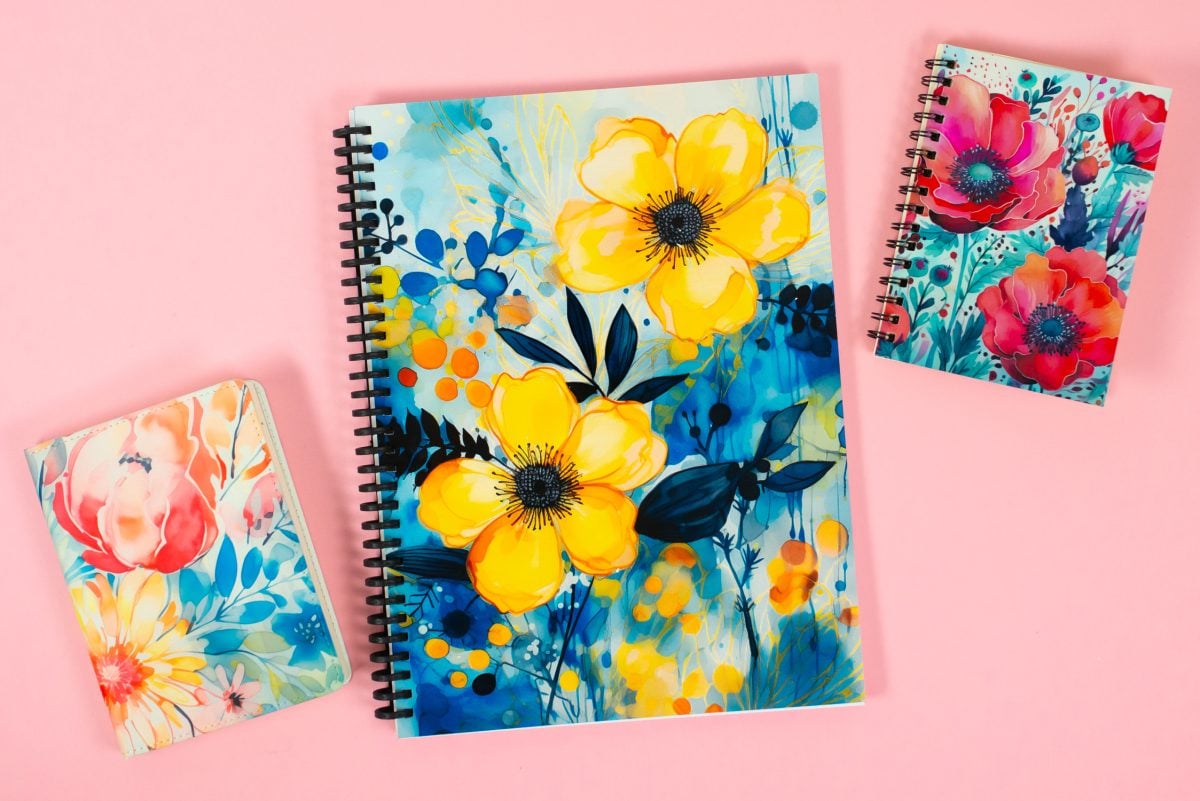
The new year is here, which means it’s the perfect time to begin journaling (if you aren’t already)! Keeping a journal is at the top of many New Year’s Resolution lists, so I thought it would be fun to make a few different journals using sublimation! The new year is a great time to make your own custom journal. The best part? They make a great gift for any season, holiday, or event!
Personally, I find that journaling helps me stick to goals and intentions I set for myself at the beginning of each year. Rather than make a resolution, I typically choose a word for my year and develop goals around it. By journaling, I allow myself to check in and come back to that word throughout the year. My words for the last few years were:
- Worth
- Deliberate
- Refine
- Connect
- Stability
For this new year, my word is “simplify.” This year, I’m going back to the basics in so many ways, both in my business and my personal life. I’m very happy to be looking at the upcoming year as a time to clarify what’s really important and streamline some things that have become too big.
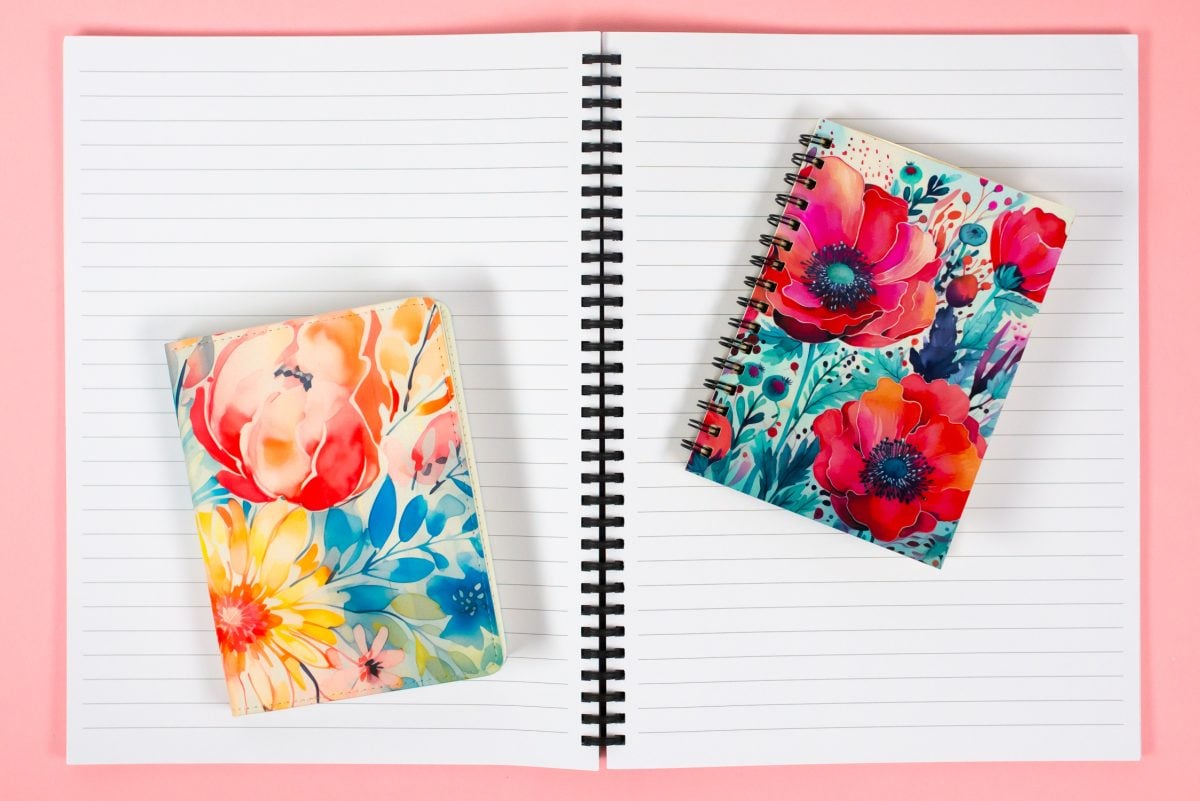
If you’re new to journaling, I have five tips at the end of this post to get started!
Types of Sublimation Journals
Sublimation journals and notebooks are a pretty straightforward project, so they’re really good for beginners. For this post I tested three different journals and I’ll share my pros and cons of each below!
- Small Coil-Bound Sublimation Notebook – 4.125″ x 5.75″
- Large Click-Bound Sublimation Notebook – 8.375″ x 11.25″
- Small Faux Leather Sublimation Journal – 9.125″ x 5.75″
For these journals, I am using my Sawgrass SG1000 along with Photoshop. For the two smaller journals, you can use a regular sheet of paper, but if you want to do a full-size image for the large notebook, you’ll need a printer that can print 11 x 17. You could also do a smaller image on the larger notebook, if you’d like.
Additionally, for my press I’m using my WALApress heat press. You can use a Cricut EasyPress, just make sure that you are using a firm mat under your project instead of the EasyPress mat and that you’re using firm, even pressure. If you’re using a Cricut EasyPress, I would suggest sticking with a design that can be completely covered by your press plate so you don’t end up with press marks.
If you are new to sublimation printing and need to review the basics, see my post The Ultimate Guide to Sublimation Printing & Crafting.
Watch the Sublimation Journals Video
If you’d like to see this project in video form, just hit play below! For a written tutorial, keep reading.
Supplies to Make Sublimation Journals
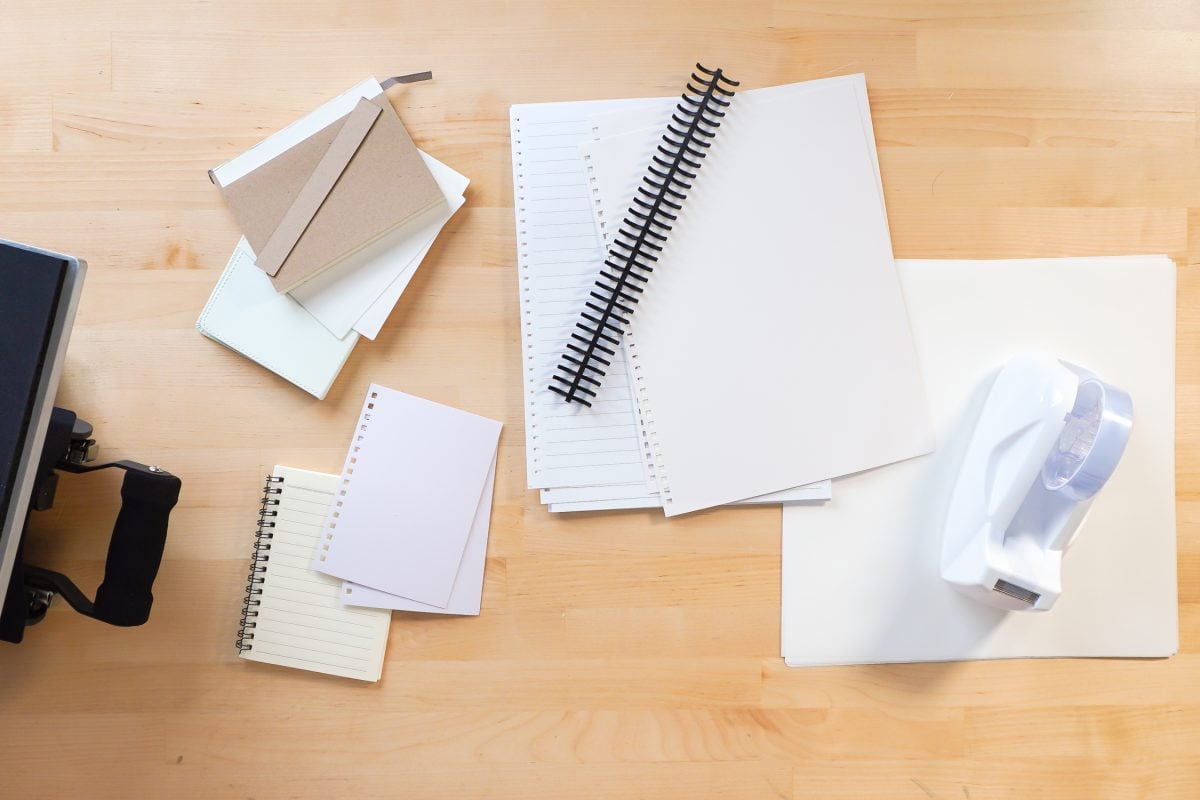
Get everything you need to make this project on my Amazon shopping list!
- Sublimation printer
- Sublimation paper
- Small Coil-Bound Sublimation Notebook
- Large Click-Bound Sublimation Notebook
- Small Faux Leather Sublimation Journal
- Heat-resistant tape
- Butcher paper
- Heat press
- PNG sublimation images (see below)
Get the Free File
Want access to this free file? Join my FREE craft library! All you need is the password to get in, which you can get by filling out the form below. The file number is: S22.
How to Make a Sublimation Journals
Print Your Images
When I need to create images of a certain size, I like printing from Photoshop. You can also print from other programs like Google Docs or Cricut Design Space. But Photoshop makes it easy to size an image perfectly for your project.
Start by creating a new document slightly bigger than your journal cover (sizes for the journals I used are above). So for the small 4.125″ x 5.75″ coil-bound journal, I used 4.25″ x 5.875″ as my document size.
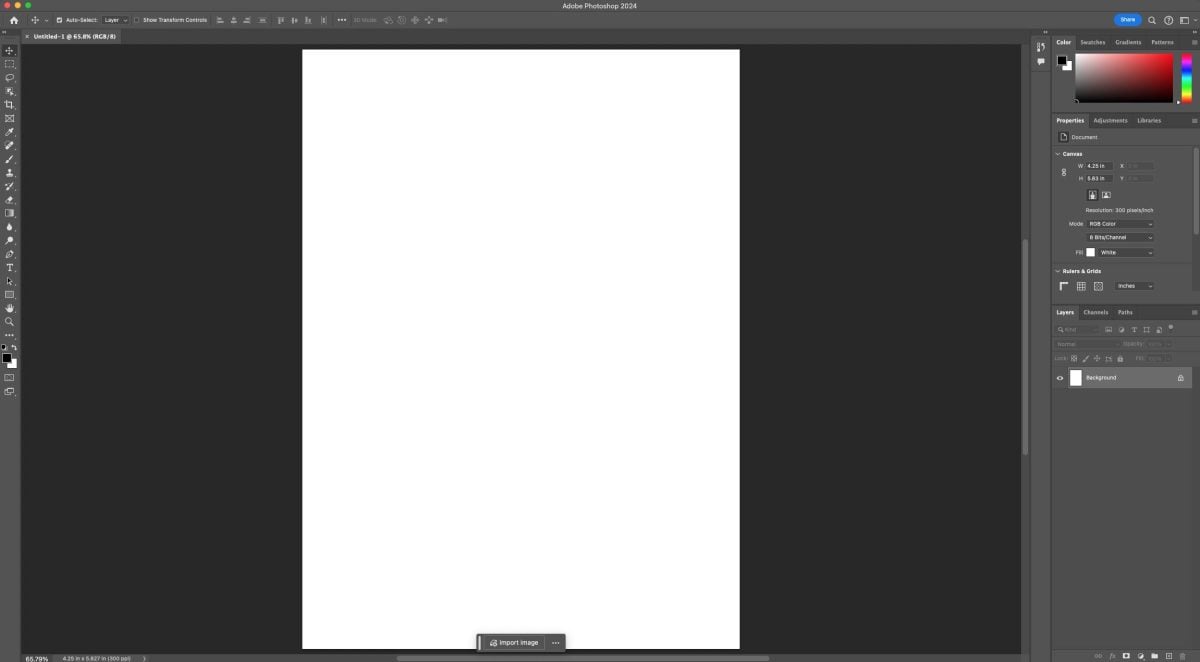
Then Place your PNG. Go to File > Place Embedded and navigate to the image you want to put on your journal. Photoshop will automatically size it to fit the document.
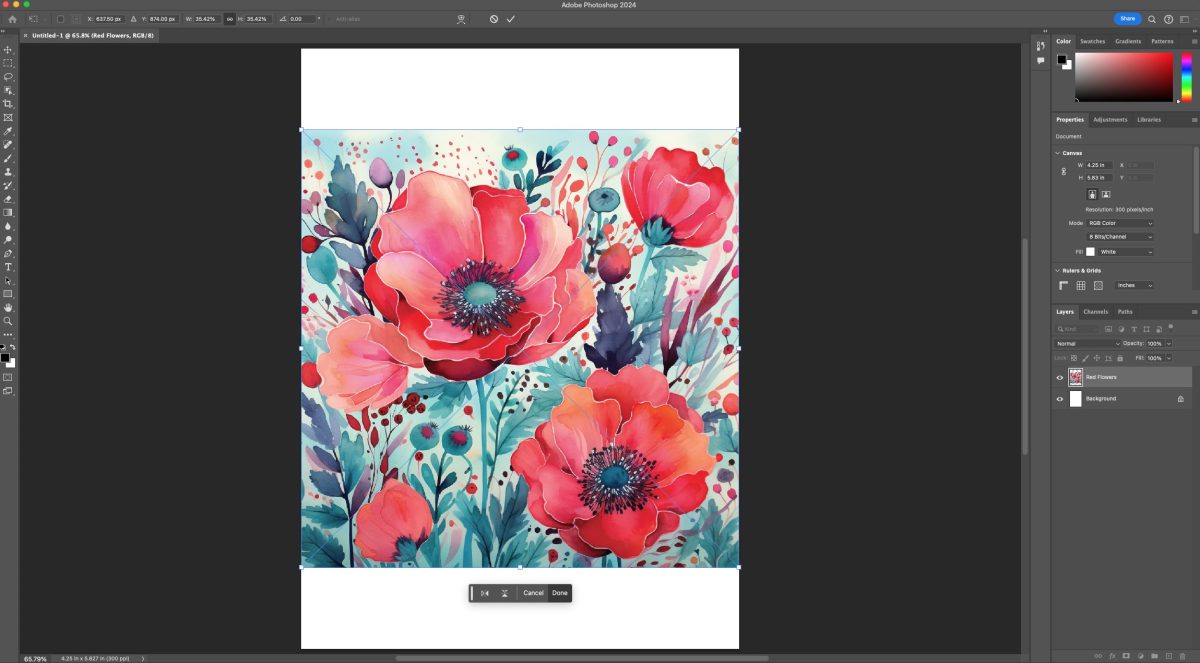
Then you can resize your image to fit the whole document. Hit enter to embed the image in the document.
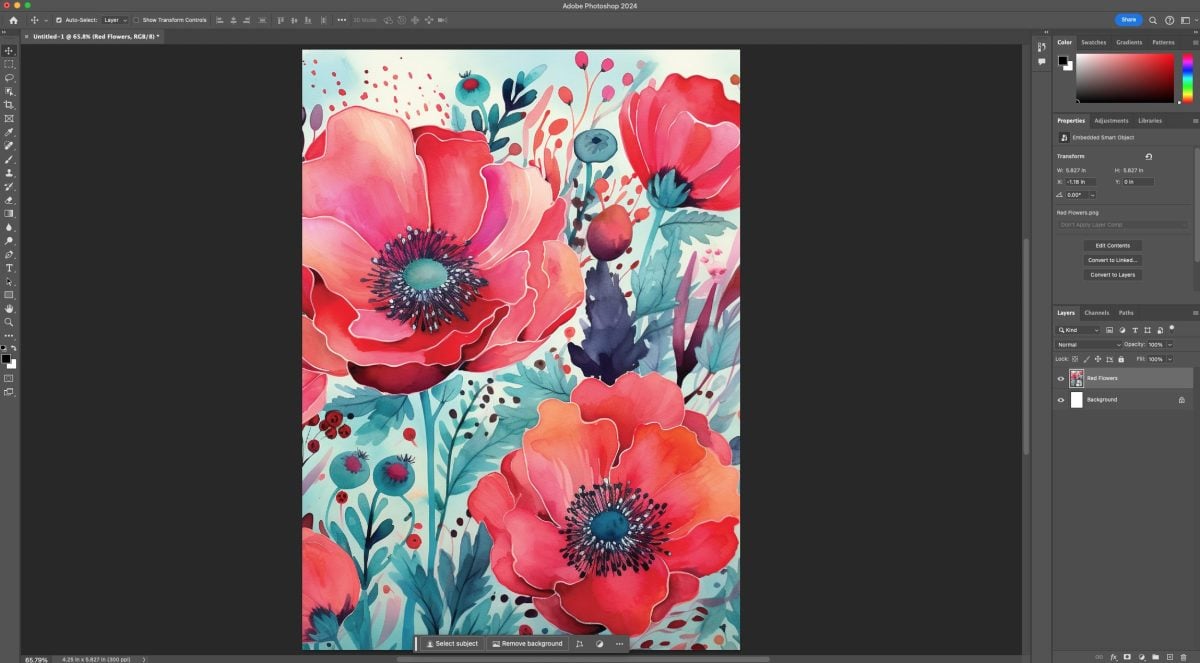
In the Print box, I chose my Sawgrass printer. You can also print through Sawgrass PrintMate, which will give you more sublimation settings, but I went straight to my printer with these. You also want to select “Printer Manages Colors” if you are using a sublimation-specific printer. If you are using a converted printer, choose your ICC profile here if you have one.
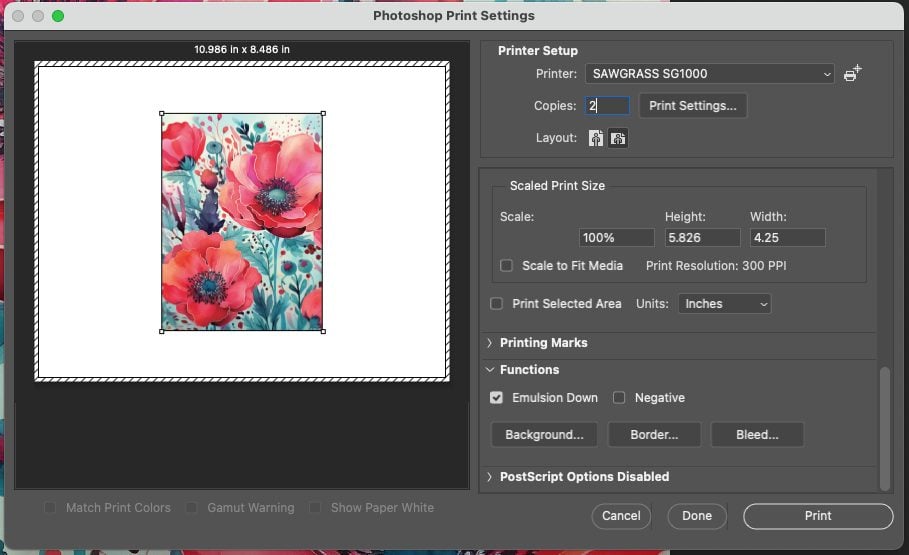
If you have an image that must read a certain direction, make sure to scroll down in the print setting and choose “emulsion down” under Functions—this will reverse your image. Then click print and your image will be sent to your Sawgrass or other printer!
Journal Pros and Cons
- Small Faux Leather Journal: – easy to use, easy to buy on Amazon, a bit smelly, small,
Pressing the Small Coil Bound Sublimation Notebook
- Time: 60 seconds
- Temperature: 365° F
- Pressure: medium
Let’s start with that small coil-bound sublimation notebook. You’ll want to sublimate on the shiny (almost glittery!) side of the cover. Make sure you place the binding edge of each cover piece opposite the other, or else your back cover will be upside down.

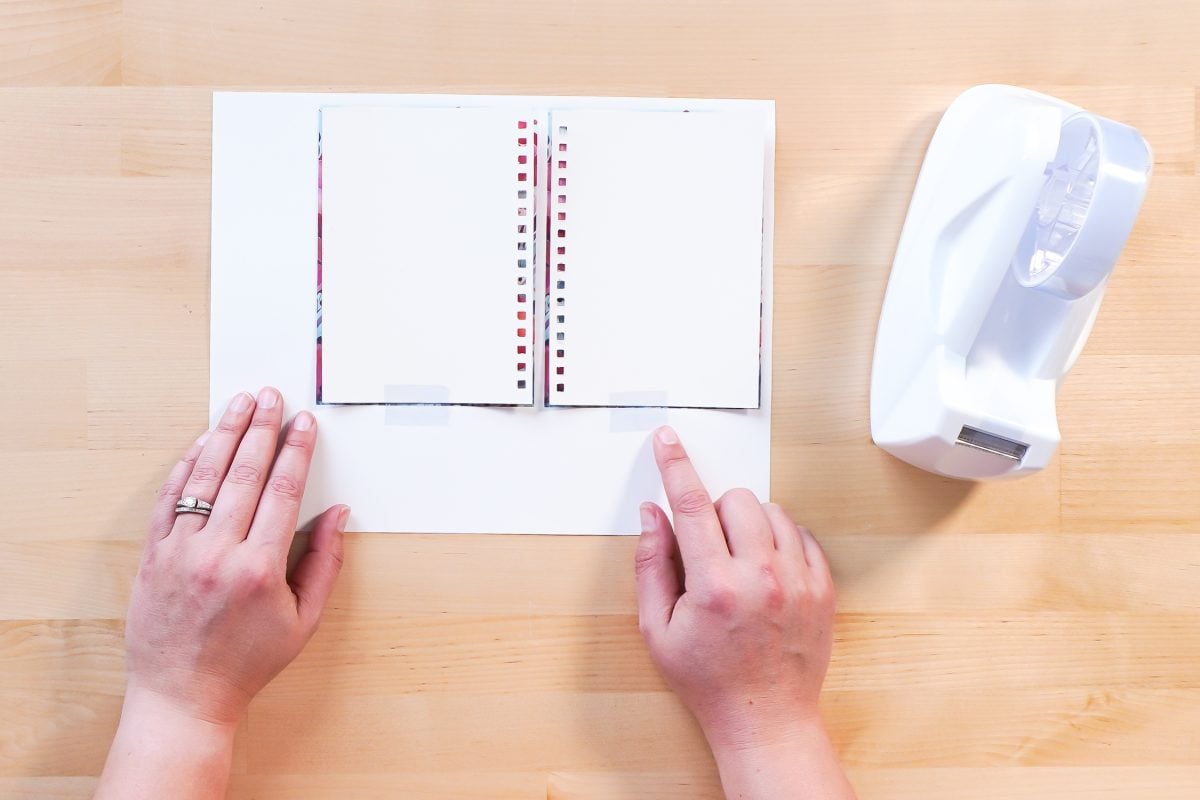
I found that the tape REALLY stuck to the inside covers and was very difficult to remove, so just use as much tape as needed to secure your covers to the image.
Then place a piece of butcher paper on the bottom of your heat press pad to protect it. Then flip over the notebook covers so the covers are facing up and the image is facing down on top of the covers. (NOTE: If you do it the other way, your image will be faded—that was my first attempt!).
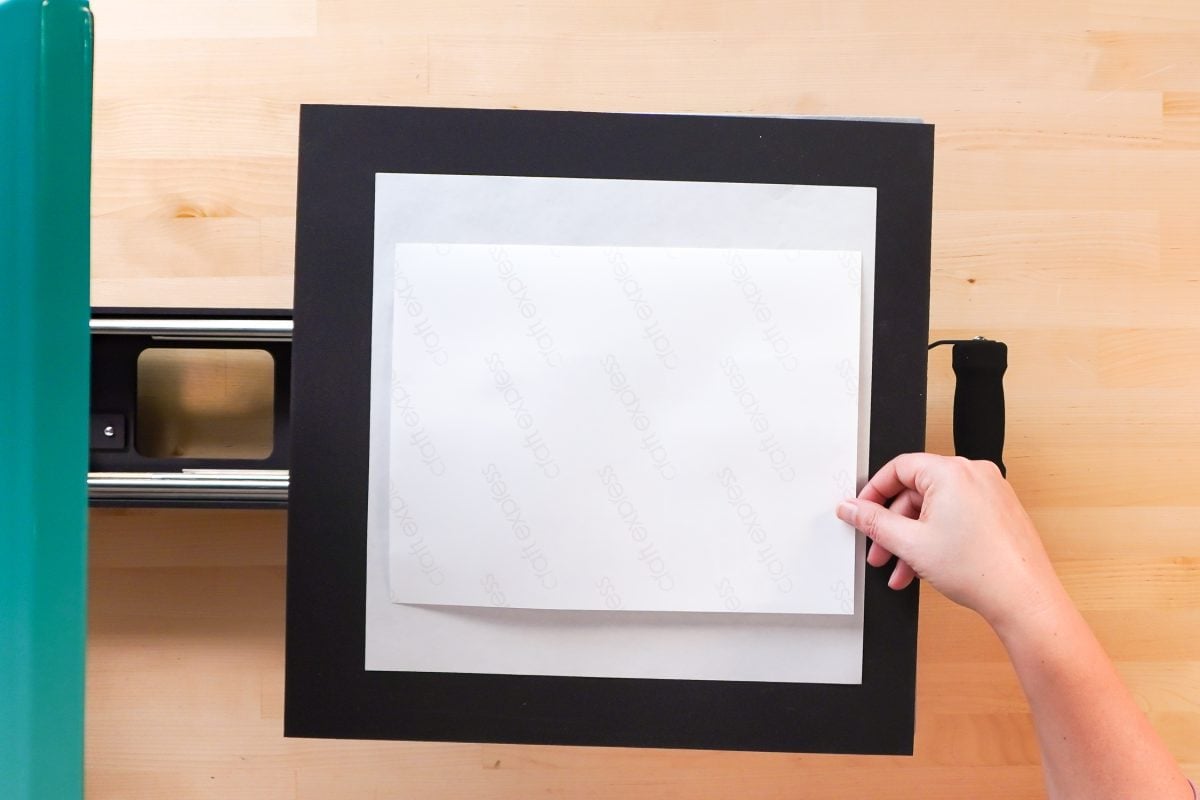
Place another sheet of butcher paper on top to protect your press and press for the recommended time and temperature above.
When the press is done, remove the covers from the press and place something heavy on top so that the cover curls less.
Then you can add the covers to the binding, slipping the holes in the cover under the prongs of the binding. I have to say, this was my least favorite binding of the three—the coils bend easily and it’s just difficult to get the cover on.
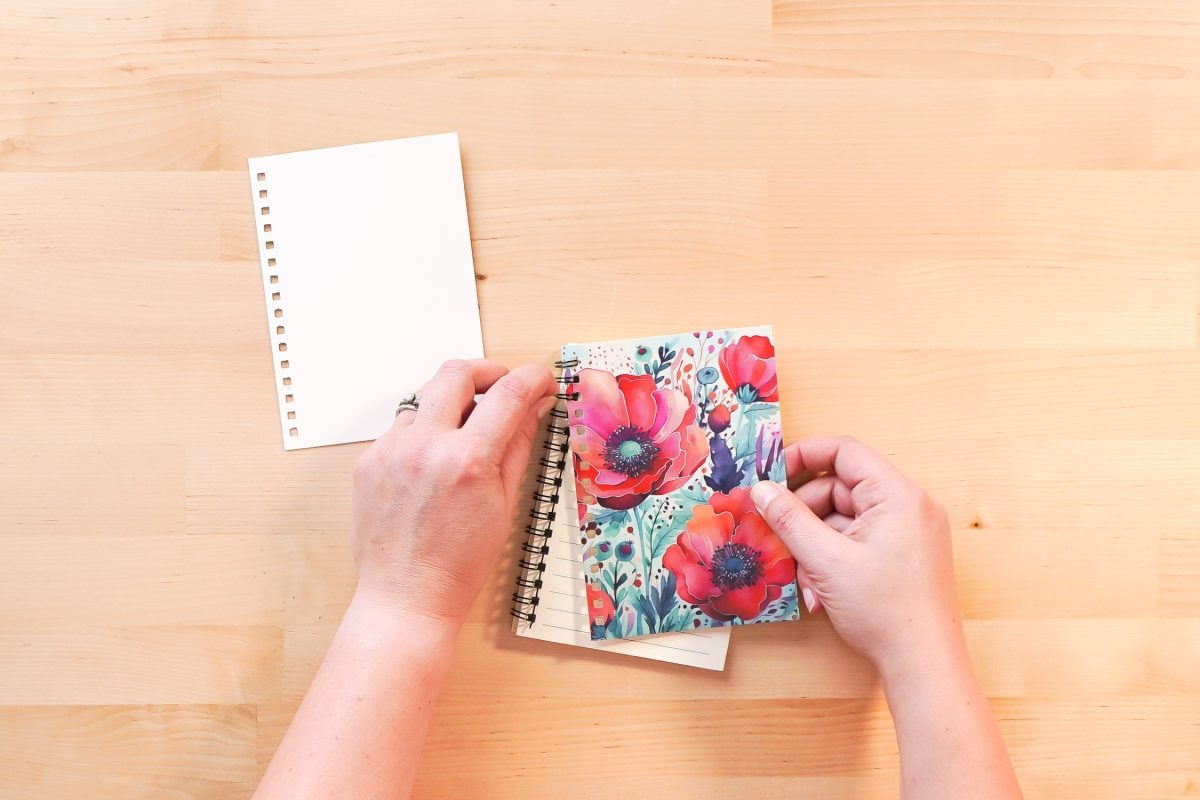
For the back cover, flip the cover over and add it in the same way. Then spin it all the way to the back.
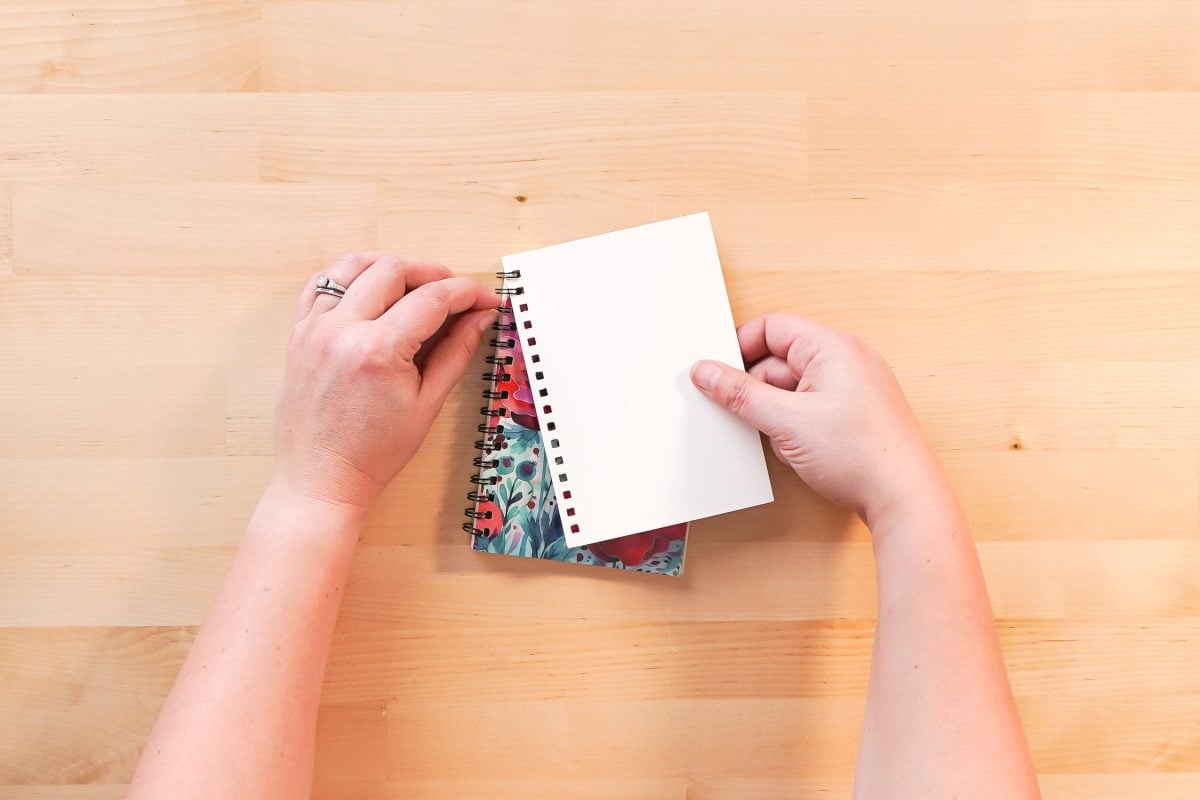
Pros: These notebooks are easy to purchase on Amazon and came out to only $4 per notebook (I bought a pack of three). The cover sublimated beautifully and was really vibrant.
Cons: It was smaller than listing (not A5, which is closer to 6″ tall). I didn’t like how the pages have a yellow cast to them and I found them the most difficult of the three to assemble. These were my least favorite of the bunch, mostly because of the binding.
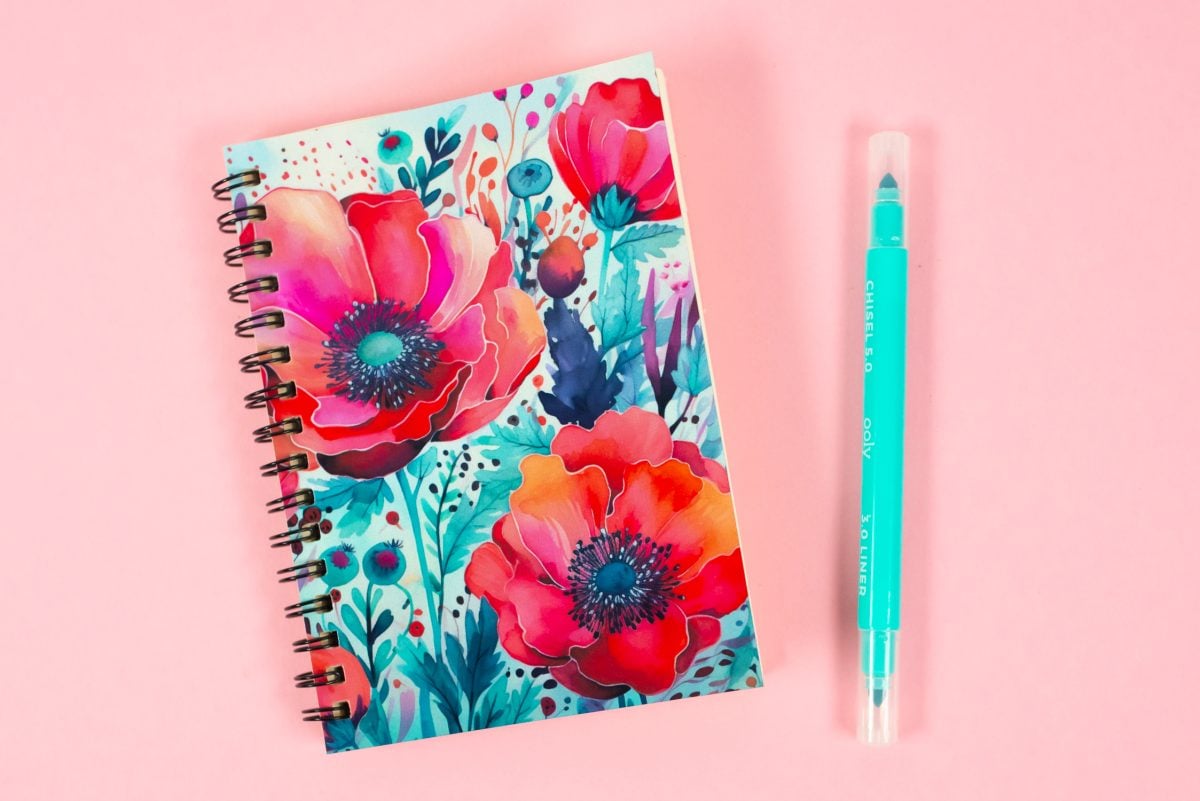
Pressing the Large Click Bound Sublimation Notebook
- Time: 60 seconds
- Temperature: 365° F
- Pressure: medium
Sublimating this journal was exactly like the one above, but larger. I used the 11″ x 17″ paper for my notebook.
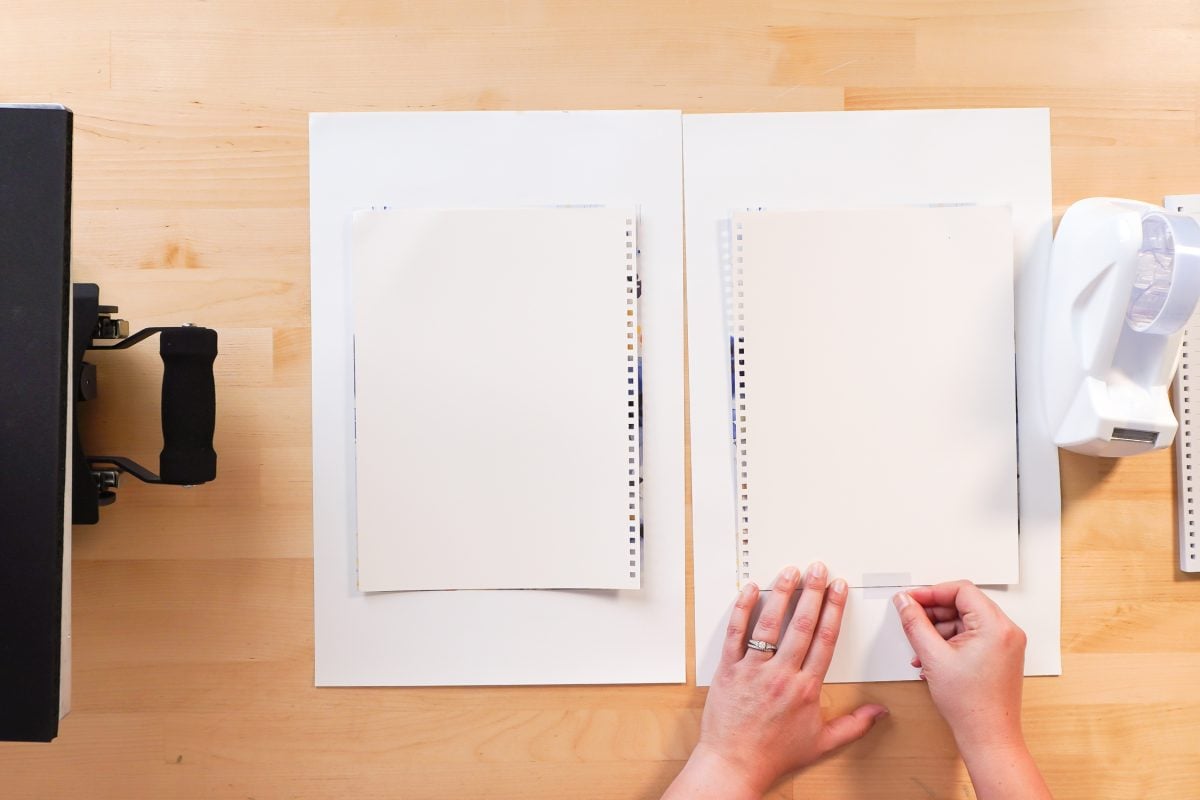
I had to press this one in two presses since each cover was large.

This was my favorite binding of the three! Assembling the click binding of this notebook was not only easy, but I found it just really satisfying to click all the little bindings into place. Just pinch each binding closed with a snap!
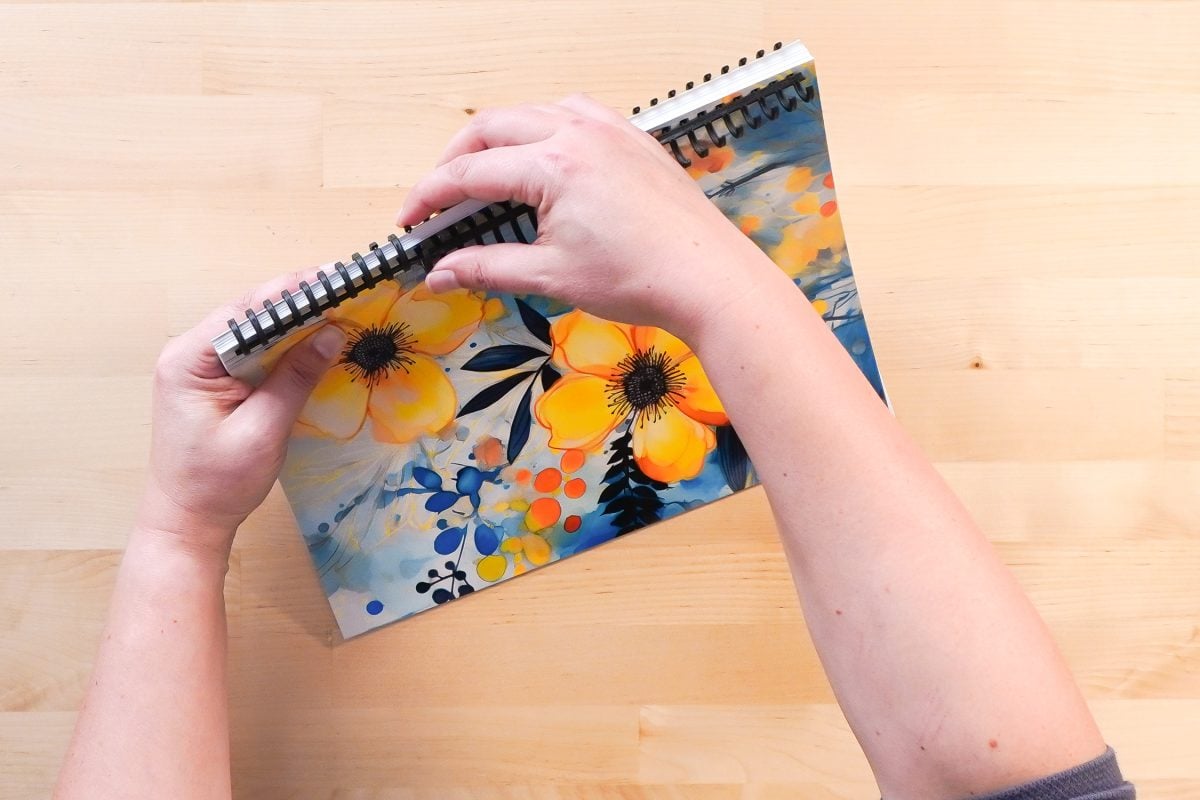
Pros: The cover sublimated beautifully and was really vibrant. I liked the click binding a lot. And I like the size—I am not one to write in a tiny journal or notebook. Give me something with space to really get my thoughts out! These were nearly $8 each, but they were more than 4x the size of the smaller coil-bound journal, so I thought they were well-priced. These were my favorite of the bunch.
Cons: I couldn’t find a larger notebook like this on Amazon, so I ended up purchasing from Etsy. Took a bit longer than Amazon to ship, but got here relatively quickly.
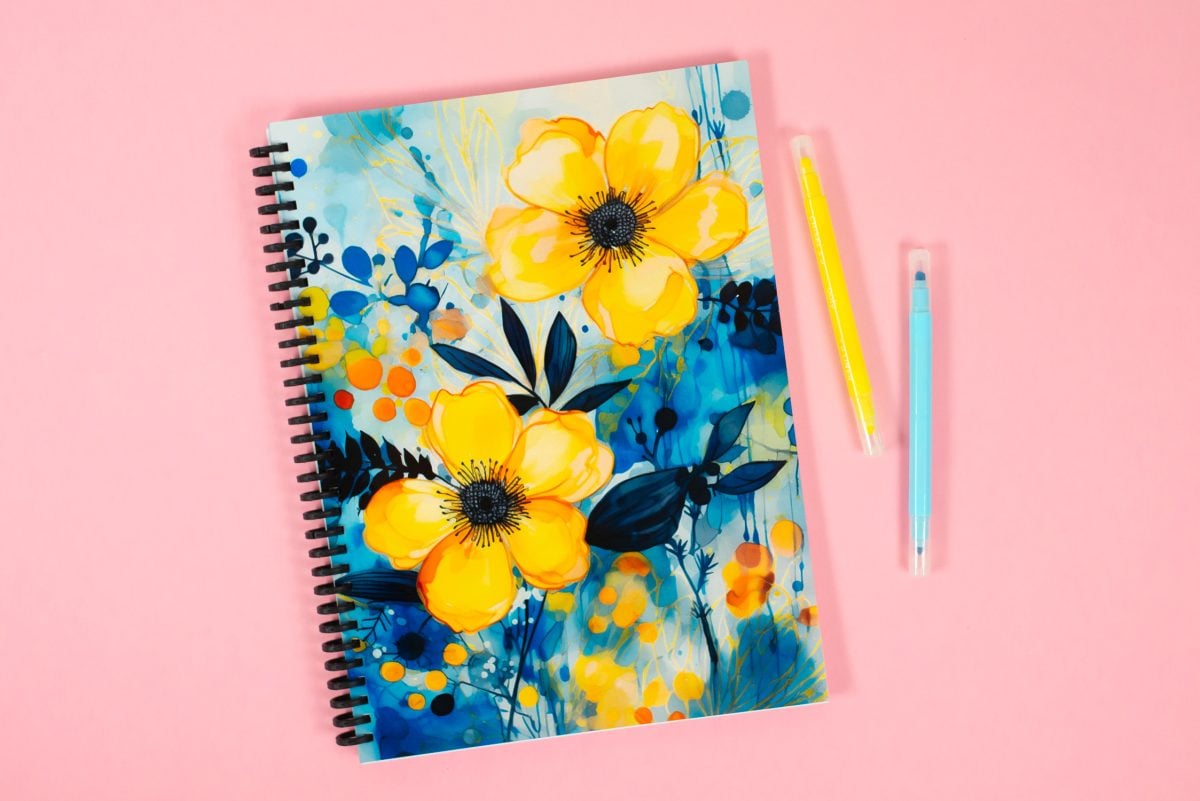
Pressing the Small Faux Leather Journal
- Time: 80 seconds
- Temperature: 365° F
- Pressure: medium
Now let’s finish up with the faux leather journal. For this one, we’re sublimating the cover as a single piece, vs. two separate covers.
You’ll notice that there’s an extra piece of cardboard. This needs to be placed in between the two panels of your journal. This will ensure you don’t have any fading on your cover.
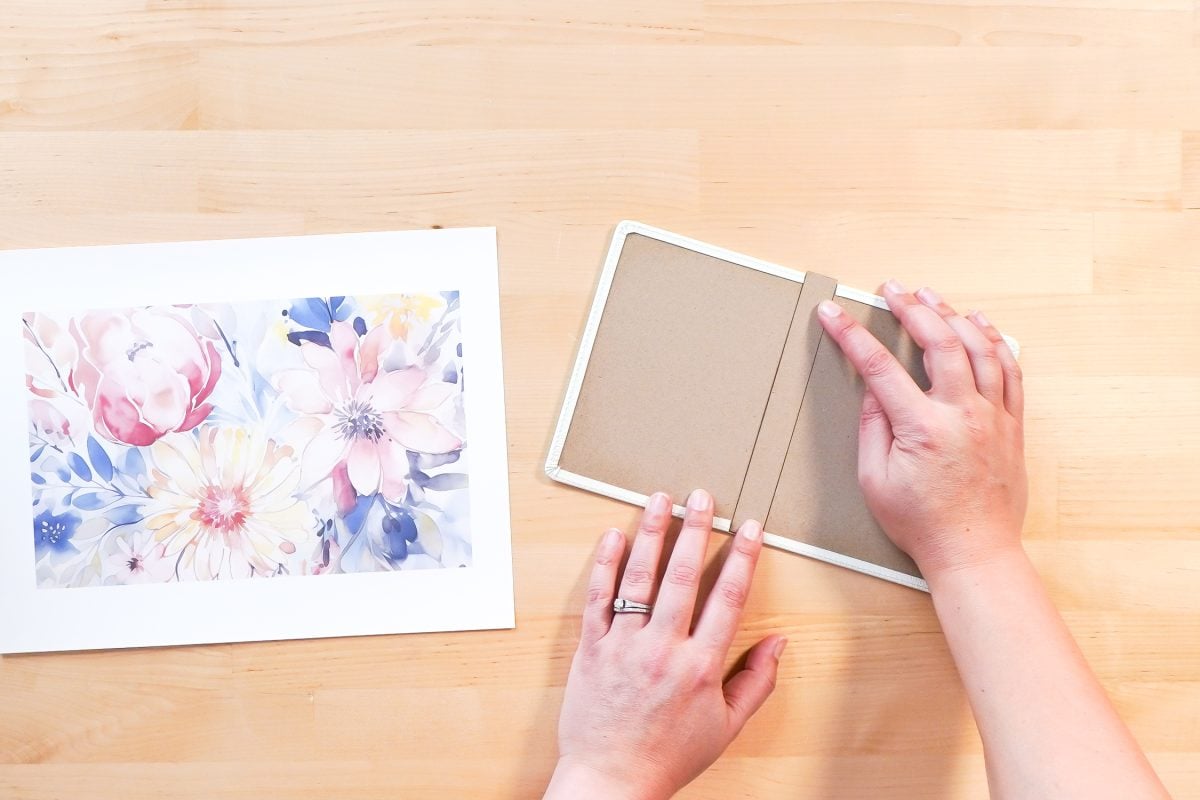
Tape your cover to the press and press according to the above settings.
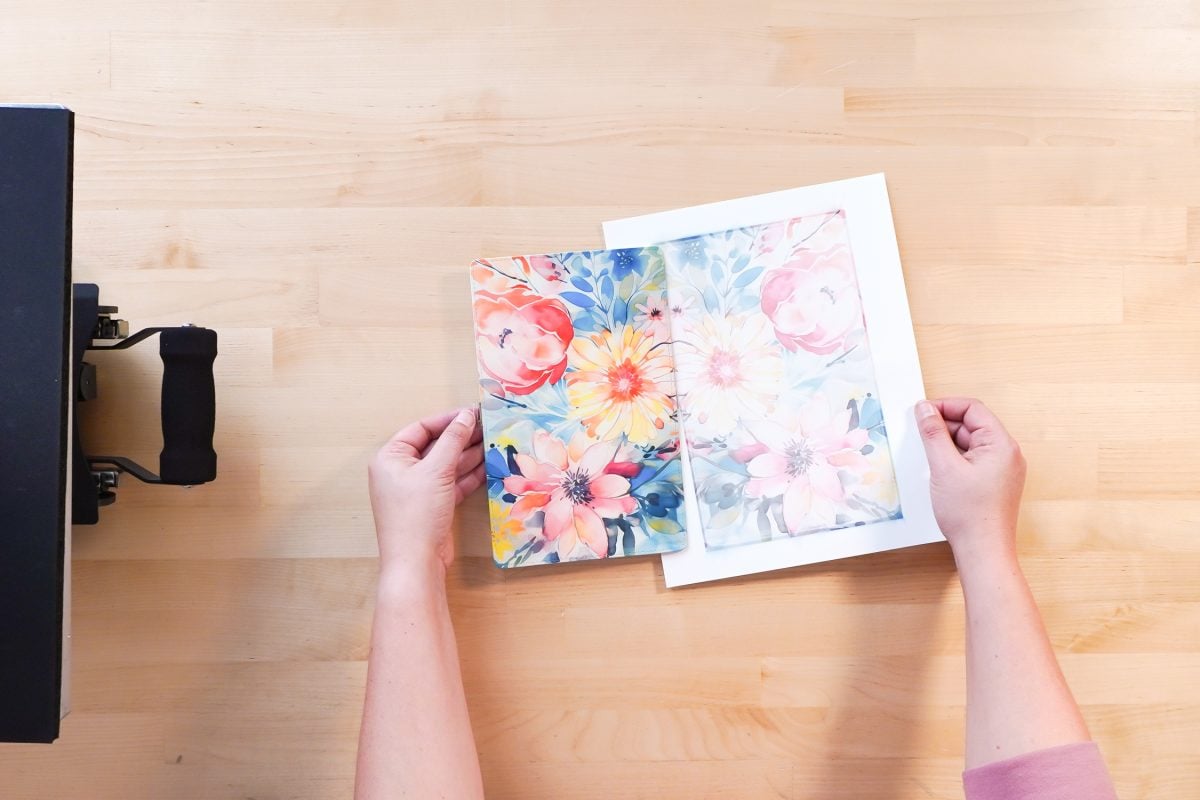
Assembling these is a bit different. Remove that center piece of cardboard you added. Along with your journal insert, you should have two adhesive sheets. Peel back the adhesive from the first sheet.

Then carefully place the sticky side of the sheet on one side of the journal insert. Peel back the other backing piece on the adhesive.
Then place the journal insert inside the journal cover. Repeat on the other side to secure the journal insert into the cover.

Pros: While the cover was a bit less vibrant and more soft because of the faux leather, it did sublimate beautifully. Assembling wasn’t very difficult. I paid about $5.50 per journal (a pack of 4 for $22). It also included a gray ribbon bookmark, which was a nice touch.
Cons: The journal won’t lay flat when writing in it (though most similarly bound journals have the same problem). You can hear the adhesive straining as you open the pages. While I think the journal turned out lovely, it’s not one I’d particularly like to write in.

5 Journaling Tips for Beginners
1. Decide what you’ll use your journal for
As I mentioned above, I use my journal to keep track of my goals for the year. I add checklists, random ideas, and periodic check ins so I know where I’m at over time. There are so many ways to journal. You can document your day, use it as a gratitude journal, write down thoughts/quotes/anything that resonates with you, and more.
What will you use your journal for?
2. Use writing prompts—or don’t
If the thought of journaling feels overwhelming, you may want to try out some journaling prompts. For example:
- I am grateful for…
- I am feeling…
- Today I’m reflecting on…
Prompts can be very simple, or more in depth questions you ask yourself. If you’re feeling stuck, you can search for journaling prompts online and see if they help you get started.
If prompts aren’t your thing and you’d rather create lists or joy down thoughts, that’s fine too! This is your personal journaling journey.
3. Create a routine
Decide whether you’ll journal daily, weekly, monthly, or some other cadence that works for you. I find that making journaling part of your routine and schedule helps to actually stick to it. It may take some time to get into it, but hopefully over time the thoughts flow easier and you begin to reap the benefits of journaling.
4. Don’t put pressure on yourself
Yes, I know I just said to create a routine, however, if you skip a day (or five!) don’t fret. Journaling should make you feel good. It’s something solely for you and no one else. Don’t put unrealistic expectations on yourself. If journaling works better for you when it’s more sporadic, that’s fine too! It’s like most other routines in life. If you aren’t enjoying it, you won’t stick with it.
Also, don’t get caught up in what your journal looks like. My journal and your journal will look very different. There are people who create and keep gorgeous planners, and then there are people like me—mine is a MESS and doesn’t look nearly as neat and tidy as most of my “online” life!. What works for you won’t work for everyone else. Don’t compare yourself to others!
5. Get creative
And lastly, make your journal exactly what YOU want it to be! If you’re like me and enjoy writing with flair pens, then by all means, go to town! Make those pages as colorful (or non-colorful) as you’d like! Add doodles, magazine clippings, pictures, or anything else that sparks joy and makes you feel good. Again, there’s no one-size-fits-all for journaling, so do what works best for you!

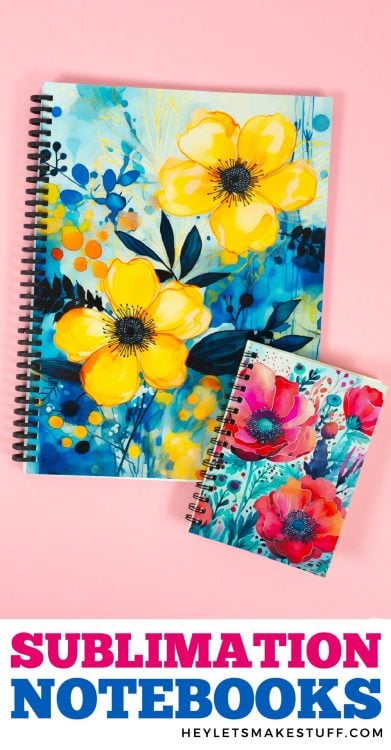
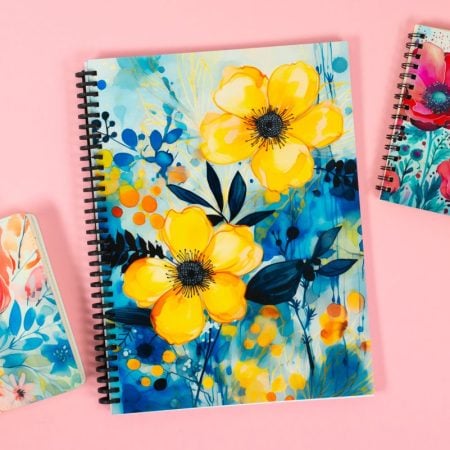
CUSTOM SUBLIMATION JOURNALS
Supplies
Instructions
- How to Make a Sublimation JournalsPrint Your ImagesIf images need to be of a certain size, print them from Photoshop. You can also print from other programs like Google Docs or Cricut Design Space. But Photoshop makes it easy to size an image perfectly for your project.Start by creating a new document slightly bigger than your journal cover (sizes for the journals used are above). So for the small 4.125" x 5.75" coil-bound journal, 4.25" x 5.875" was used as the document size.

- Then Place your PNG. Go to File > Place Embedded and navigate to the image you want to put on your journal. Photoshop will automatically size it to fit the document.

- In the Print box, a Sawgrass printer was chosen. You can also print through Sawgrass PrintMate, which will give you more sublimation settings. You also want to select "Printer Manages Colors" if you are using a sublimation-specific printer. If you are using a converted printer, choose your ICC profile here if you have one.

- If you have an image that must read a certain direction, make sure to scroll down in the print setting and choose "emulsion down" under Functions—this will reverse your image. Then click print and your image will be sent to your Sawgrass or other printer!
- Journal Pros and ConsSmall Faux Leather Journal: – easy to use, easy to buy on Amazon, a bit smelly, small,

- Pressing the Small Coil Bound Sublimation NotebookTime: 60 secondsTemperature: 365° FPressure: mediumLet's start with that small coil-bound sublimation notebook. You'll want to sublimate on the shiny (almost glittery!) side of the cover. Make sure you place the binding edge of each cover piece opposite the other, or else your back cover will be upside down.

- The tape REALLY stuck to the inside covers and was very difficult to remove, so just use as much tape as needed to secure your covers to the image.Then place a piece of butcher paper on the bottom of your heat press pad to protect it. Then flip over the notebook covers so the covers are facing up and the image is facing down on top of the covers. (NOTE: If you do it the other way, your image will be faded—that was my first attempt!).

- Place another sheet of butcher paper on top to protect your press and press for the recommended time and temperature above.When the press is done, remove the covers from the press and place something heavy on top so that the cover curls less.Then you can add the covers to the binding, slipping the holes in the cover under the prongs of the binding. This was the least favorite binding of the three—the coils bend easily and it's just difficult to get the cover on.

- For the back cover, flip the cover over and add it in the same way. Then spin it all the way to the back.

- Pros: These notebooks are easy to purchase on Amazon and came out to only $4 per notebook when buying a pack of three). The cover sublimated beautifully and was really vibrant.Cons: It was smaller than listing (not A5, which is closer to 6" tall). The pages have a yellow cast to them and found them the most difficult of the three to assemble. These were the least favorite of the bunch, mostly because of the binding.

- Pressing the Large Click Bound Sublimation NotebookTime: 60 secondsTemperature: 365° FPressure: mediumSublimating this journal was exactly like the one above, but larger. The 11" x 17" paper was used for this notebook.

- This one had to be pressed in two presses since each cover was large.

- This was the favorite binding of the three! Assembling the click binding of this notebook was not only easy, but found it just really satisfying to click all the little bindings into place. Just pinch each binding closed with a snap!

- Pros: The cover sublimated beautifully and was really vibrant. The click binding and the size were liked the most out of the three. These were nearly $8 each, but they were more than 4x the size of the smaller coil-bound journal, so still well-priced. These were the favorite of the bunch.Cons: A larger notebook could not be found like this on Amazon, so was one was purchased from Etsy. Took a bit longer than Amazon to ship, but got here relatively quickly.

- Pressing the Small Faux Leather JournalTime: 80 secondsTemperature: 365° FPressure: mediumNow let's finish up with the faux leather journal. For this one, you will be sublimating the cover as a single piece, vs. two separate covers.You'll notice that there's an extra piece of cardboard. This needs to be placed in between the two panels of your journal. This will ensure you don't have any fading on your cover.

- Tape your cover to the press and press according to the above settings.

- Assembling these is a bit different. Remove that center piece of cardboard you added. Along with your journal insert, you should have two adhesive sheets. Peel back the adhesive from the first sheet.

- Then carefully place the sticky side of the sheet on one side of the journal insert. Peel back the other backing piece on the adhesive.Then place the journal insert inside the journal cover. Repeat on the other side to secure the journal insert into the cover.

- Pros: While the cover was a bit less vibrant and more soft because of the faux leather, it did sublimate beautifully. Assembling wasn't very difficult. About $5.50 was paid per journal (a pack of 4 for $22). It also included a gray ribbon bookmark, which was a nice touch.Cons: The journal won't lay flat when writing in it (though most similarly bound journals have the same problem). You can hear the adhesive straining as you open the pages. While the journal turned out lovely, it's not one that you would particularly like to write in.

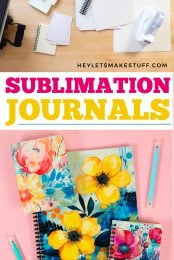

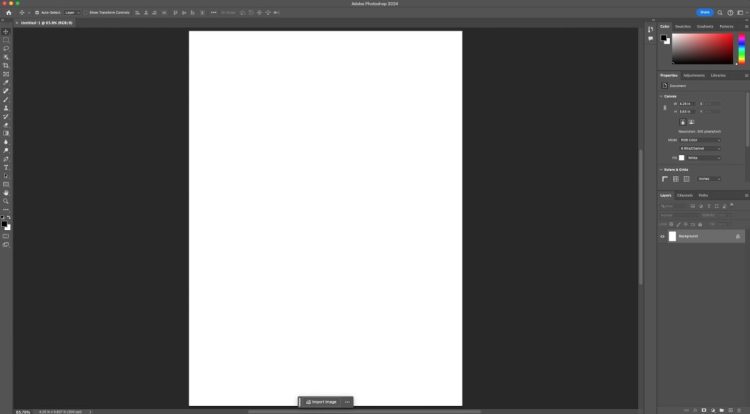
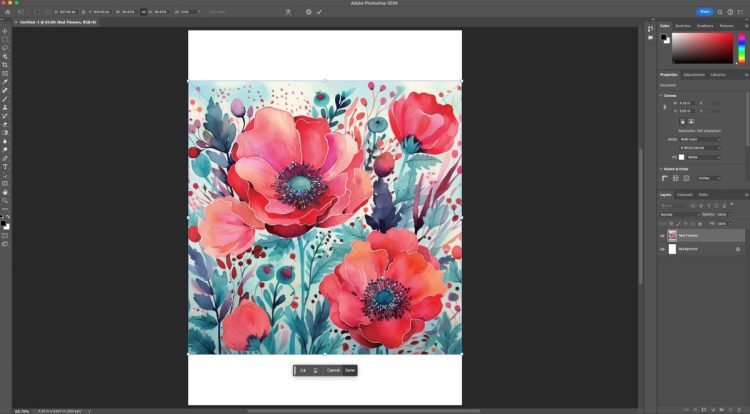
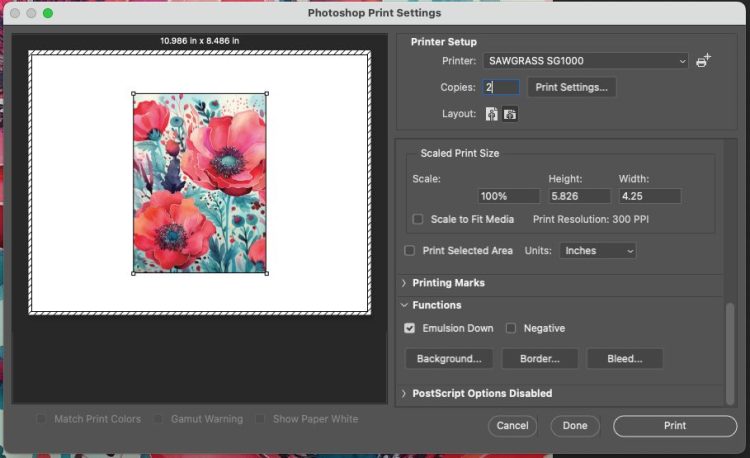
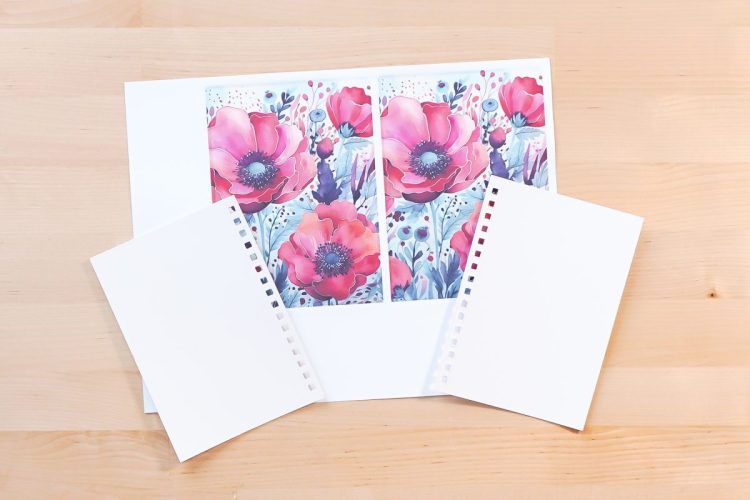
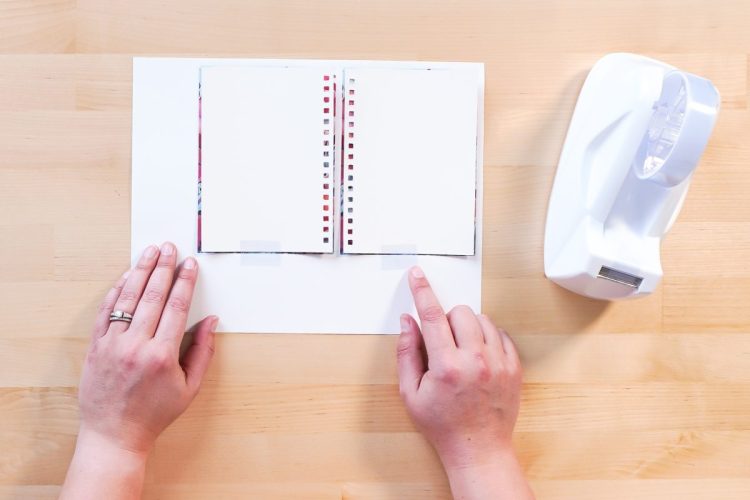

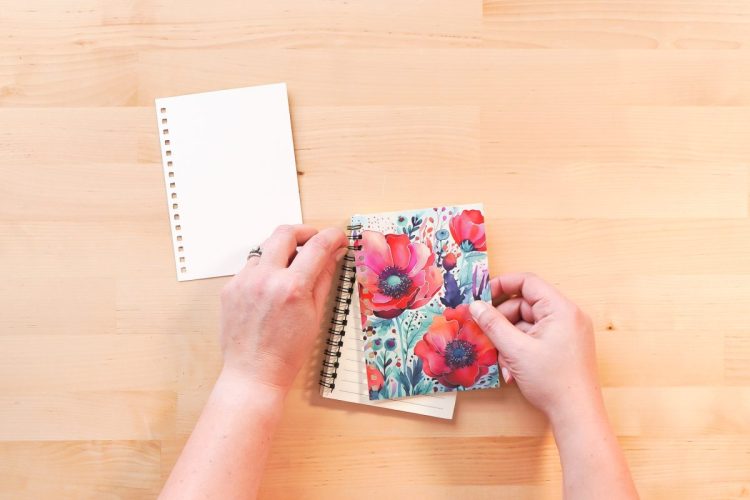


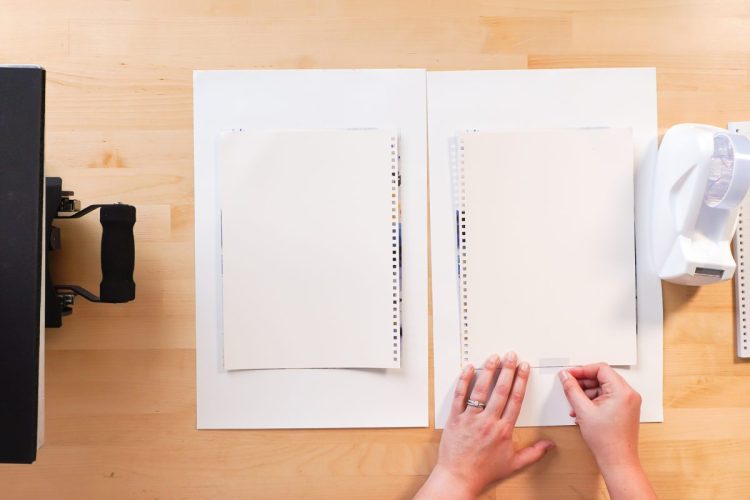
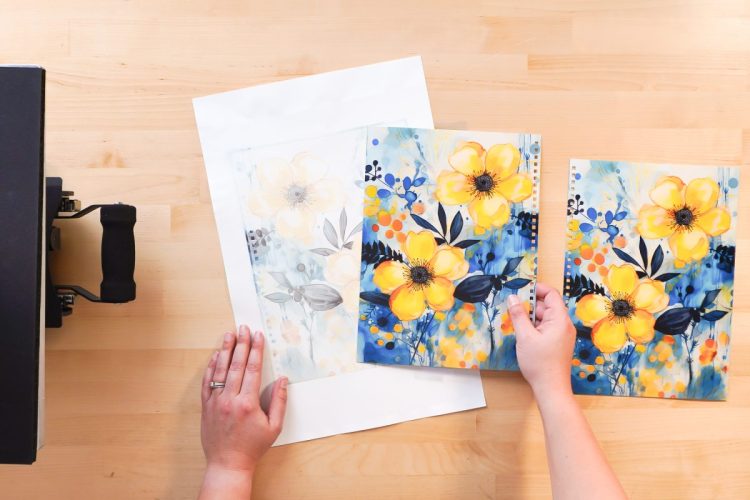
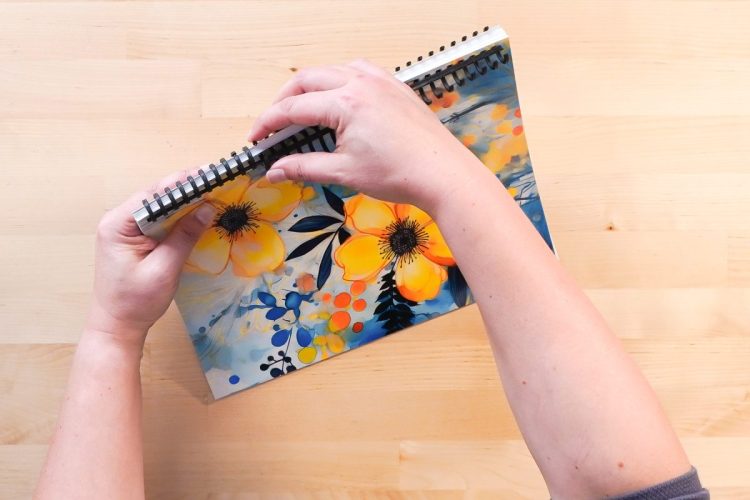
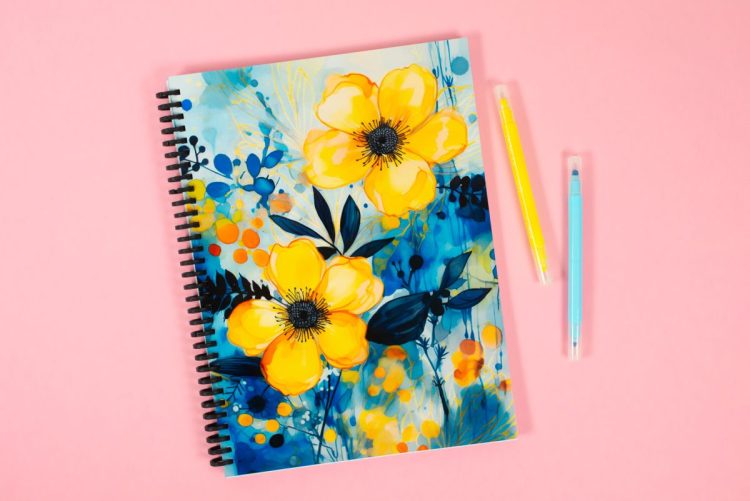
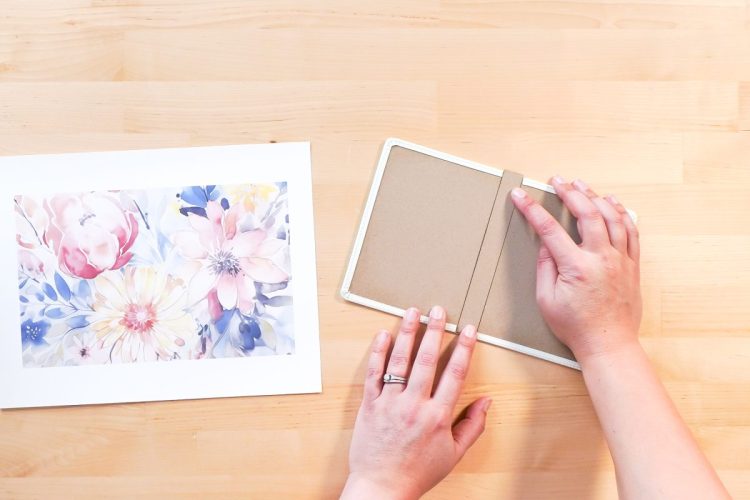
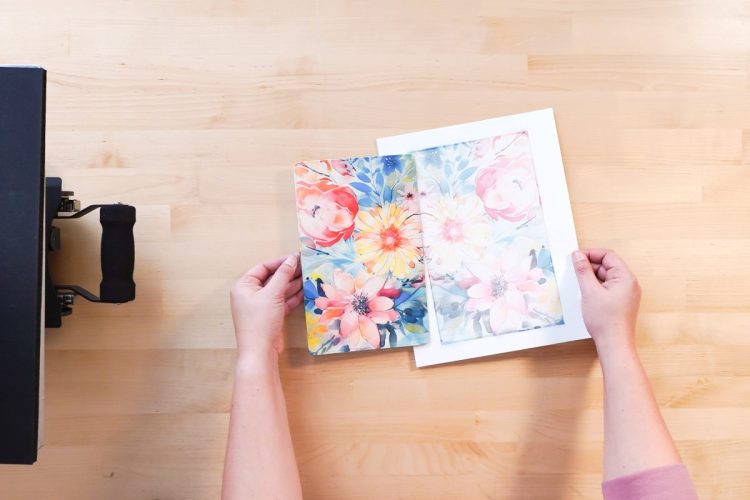
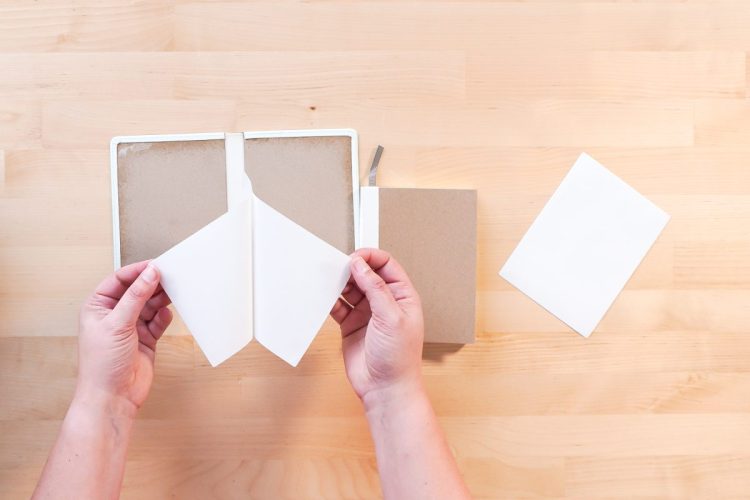
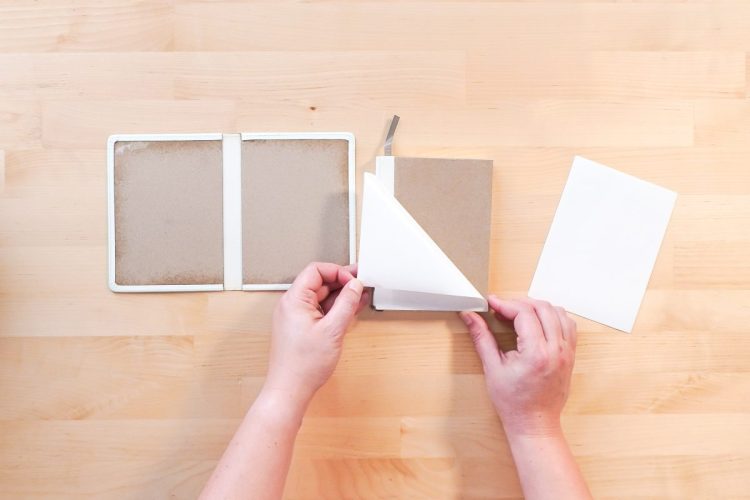
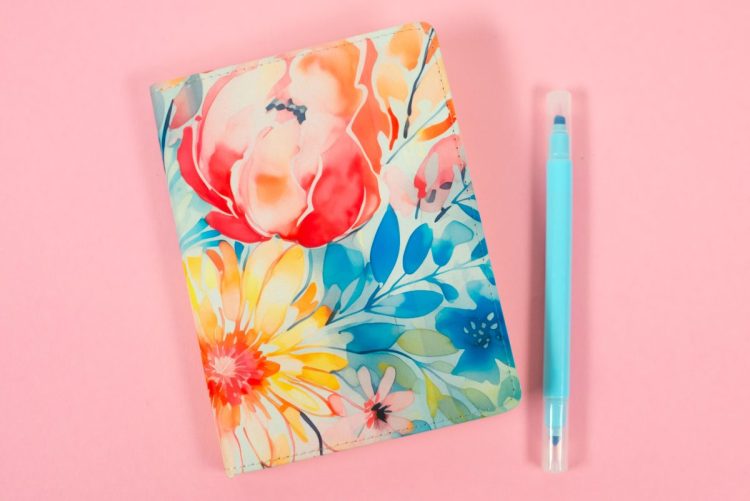


Leave A Reply!